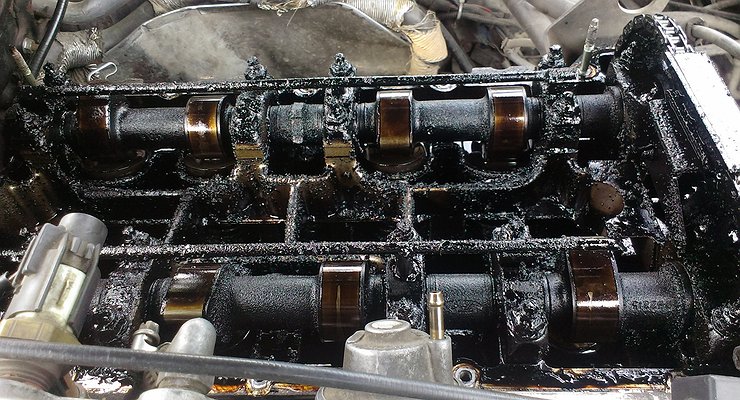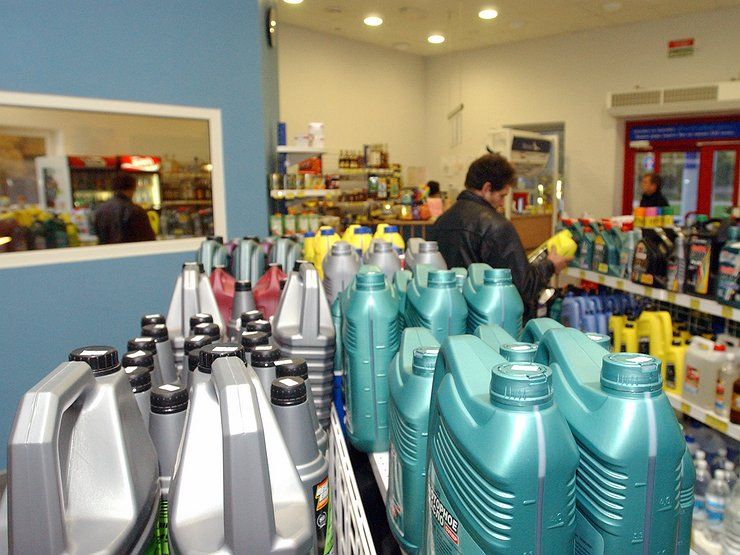Why is it important for every driver to know the boiling point of oil?
- November 4, 2022
- 0
An ordinary motorist has no idea to what temperatures the oil in the running engine of his car is heated. And this you need to know, because under
An ordinary motorist has no idea to what temperatures the oil in the running engine of his car is heated. And this you need to know, because under

The average oil temperature in the engine reaches 90-105 degrees. Deviation from this standard has unpleasant consequences for the drive unit. At the same time, low lubricant heating rates are less dangerous than high ones.
Usually the flash point of the lubricant is indicated on the canister label. The manufacturer gives this indicator without fail, because each substance has its own boiling threshold. The better the additives, the less likely the consumable will fail.
When they say “the oil was boiling”, they mean it started bubbling. This results in the formation of scale. It mixes with the deposits already in the engine and clogs the gaps between the parts and also stays in the oil channels. And the lubricant itself is no longer able to perform protective functions. This is how wear occurs in the engine and in the worst case the lubricant turns into black slurry and the device breaks down.
Motorists found out that the dangerous high-temperature zone begins in the crankcase area after 150 degrees, in the piston ring zone – after 230 degrees, and in the cylinder head – at 310 degrees.
It would seem that there is nothing to be afraid of, because many manufacturers indicate the ignition temperature of the oil – 230-240 degrees. However, real numbers can be much lower – 150-190! It depends on the condition of the engine and the design. If the unit has a pressure control system and a hot exhaust pipe runs near the crankcase, overheating of the lubricant can easily occur. And if they have also saved on the lubricant, then problems are almost inevitable.
In a traffic jam, such an engine quickly overheats and the “slurry” loses its protective properties. Problems can be recognized by the cooking noises, which are difficult to confuse with anything else, or by the black exhaust. To avoid problems, we advise you not to save on oil and to flush the unit with every lubricant change. Thus, you can avoid overheating and extend the life of the “iron horse”.

The average oil temperature in the engine reaches 90-105 degrees. Deviation from this standard has unpleasant consequences for the drive unit. At the same time, low lubricant heating rates are less dangerous than high ones.
Usually the flash point of the lubricant is indicated on the canister label. The manufacturer gives this indicator without fail, because each substance has its own boiling threshold. The better the additives, the less likely the consumable will fail.
When they say “the oil was boiling”, they mean it started bubbling. This results in the formation of scale. It mixes with the deposits already in the engine and clogs the gaps between the parts and also stays in the oil channels. And the lubricant itself is no longer able to perform protective functions. This is how wear occurs in the engine and in the worst case the lubricant turns into black slurry and the device breaks down.
Motorists found out that the dangerous high-temperature zone begins in the crankcase area after 150 degrees, in the piston ring zone – after 230 degrees, and in the cylinder head – at 310 degrees.
It would seem that there is nothing to be afraid of, because many manufacturers indicate the ignition temperature of the oil – 230-240 degrees. However, real numbers can be much lower – 150-190! It depends on the condition of the engine and the design. If the unit has a pressure control system and a hot exhaust pipe runs near the crankcase, overheating of the lubricant can easily occur. And if they have also saved on the lubricant, then problems are almost inevitable.
In a traffic jam, such an engine quickly overheats and the “slurry” loses its protective properties. Problems can be recognized by the cooking noises, which are difficult to confuse with anything else, or by the black exhaust. To avoid problems, we advise you not to save on oil and to flush the unit with every lubricant change. Thus, you can avoid overheating and extend the life of the “iron horse”.
Source: Avto Vzglyad
I’m Sandra Torres, a passionate journalist and content creator. My specialty lies in covering the latest gadgets, trends and tech news for Div Bracket. With over 5 years of experience as a professional writer, I have built up an impressive portfolio of published works that showcase my expertise in this field.